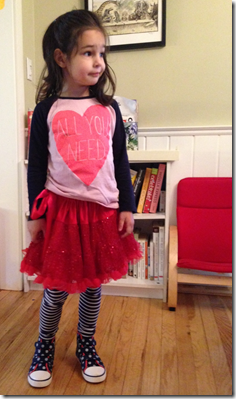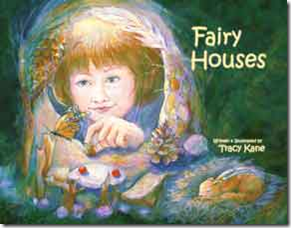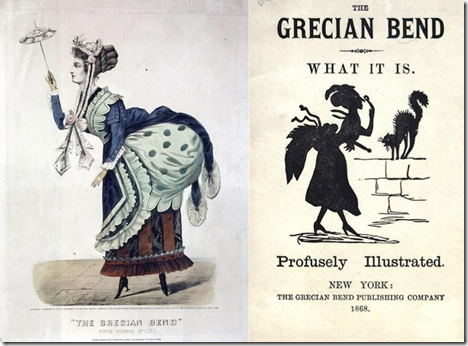Matthew Dicks's Blog, page 378
September 26, 2014
My five year-old daughter has discovered the BEST COMEBACK EVER
My five year-old daughter is a rhetorical genius.
When I attempt to convince Clara that a two minute living room clean up is not a long time, or that the last piece of grilled cheese can be eaten in seconds, or that it’s always a good idea to try to use the bathroom before going on a long trip, her response is the same:
“Not to me.”
And it’s brilliant.
It’s true. Two minutes may seem like a long time to her.
It’s true. That last piece of grilled cheese might be incredibly difficult to eat.
And yes, just because I think something is a good idea does not mean that she will think the same.
“Not to me.”
Essentially, Clara is telling me that her reality and my reality are not the same, and that imposing my reality upon her will not work.
This is a reasonable and rationale position to take. Also rhetorically brilliant.
Annoyingly so.
September 26, 1983: The day a Soviet colonel and forgotten hero saved the world from nuclear destruction.
On this day, let us not forgot the man who may have saved the human race from possible extinction.
September 26, 1983. The Cold War is at its height. The United States and the Soviet Union have thousands of intercontinental ballistic missiles pointed at each other. The two countries exist under the doctrine of mutually assured destruction.
Tensions between the two countries are especially high. Three weeks prior, the Soviet Union mistook Korean Air Flight 007 for a spy plane and shot it down, killing all 269 on board, including a United States congressman.
In a bunker near Moscow, Soviet Colonel Stanislav Petrov is monitoring for signs of a United States nuclear attack when his system detects a launch.
His country is under attack.
In the case of a launch detection, Petrov’s orders are clear:
Report the launch immediately so that the Soviet Union can retaliate before being destroyed by United States and NATO missiles.
Petrov ignores this order. He does not report the launch to his superiors. Instead, he declares the system’s indication to be a false alarm.
With the threat of intercontinental ballistic missiles already in the air, poised to destroy his country, Petrov examines all the data and makes a decision that may have saved the human race.
Shortly thereafter, it’s determined that he is correct. The computer detection system was malfunctioning. It’s subsequently determined that the false alarm had been created by a rare alignment of sunlight on high-altitude clouds.
Would the report of a US missile launch prompted Soviet military leaders to launch their own missiles in retaliation?
Thanks to Stanislav Petrov, we will never know.
September 25, 2014
Poop is here.
“I poop!” and “Poop is here!” are the two ways that my son signals the need for a diaper change.
I’m never a fan of a diaper change, but I have to say that his choice of words always make me smile.
ESPN makes the same stupid mistake that they criticized NFL commissioner Roger Goodell for two months ago.
Bill Simmons is suspended by ESPN for three weeks after calling NFL commissioner Roger Goodell “a liar” after the commissioner claimed that he never saw the Ray Rice video in which the running back punches his then fiancée on a Las Vegas elevator and knocks her out.
Police report that the video of the incident was handed over to the NFL in April.
Back in July, ESPN’s Stephen A. Smith implies that Ray Rice’s fiancée had some culpability in her beating and advises women to be wary about provoking their spouses into domestic violence.
He is suspended for two weeks.
Are companies like the NFL and ESPN trying to make us hate them?
September 24, 2014
My annual plea to the girls in my fifth grade class: Maintain your advantage over the boys. Rule the world.
“I can’t think of a better way to make the House work again than electing every woman on the ballot,” Clinton told the Democratic Women’s Leadership Forum. “There are ten women running for the Senate, six women running for governor and I wish I could vote for all of them.”
I’d like to take it one step further:
I would be willing to replace every male member of Congress with a female lawmaker.
With apologies to my own sex, I have often felt that our country would be better positioned for the future if it were run by women.
Frankly, it’s shocking that women aren’t in charge already. As a fifth grade teacher, I bear witness to the striking differences between boys and girls at the ages of ten and eleven. It’s well known that girls mature faster than boys, and nowhere is this disparity more evident than in fifth grade.
Every year, I have girls in my class who could already be employed as effective office managers. A few could probably run small companies with the right advisors.
At the same time, I have boys in my class who can’t get food from their plate to their mouth without some disaster occurring in between. I have boys who would scrape sticks in dirt all day if given the chance.
How these boys ever manage to span this intellectual chasm and in many cases overtake the girls is beyond me. I can only assume that somewhere in middle school or high school, girls turn on one another, stunting their sex’s overall progress, while boys continue to follow a more cooperative, live-and-let-live approach.
Whatever the cause, I gather the girls in my class every spring and implore them to band together and continue their dominance as they move forward to middle school. I tell them with all sincerity that the world would be a better place if it were run by women, and that it’s up to their generation to make this happen.
“Don’t be mean to one another,” I tell them. “Stick together. Support one another. And by all means, don’t fight over boys. We’re not worth it.”
My dream is to send a generation of girls forward who maintain their advantage of boys and eventually take over the world.
Perhaps I’m wrong. Maybe the world wouldn’t be any better if it were run by women. But after more than two centuries of male domination in the halls of Congress and the boardrooms of corporate America, I’m willing to give the ladies a turn and see what they can do.
It couldn’t be any worse than what my sex has accomplished so far.
September 23, 2014
My daughter received her first library card. Her father might be more excited about it than she is, and for good reason.
My daughter received her first library card last weekend. She was thrilled.
I think my wife and I were even more excited than she was.
She also checked out her first book with it: If You Give a Moose a Muffin.
I didn’t receive my first library card until I was ten years-old. There were very few books in my home when I was growing up, so my library card represented access to a world never before seen by me. I loved my public library, despite it’s miniscule size (a single room of books) and placement in the basement of our town hall. I would walk the aisles, staring at the spines of the books, unable to fathom how many stories were now available to me.
Today my hometown library is a beautiful building located in what used to be my middle school. It’s enormous, illuminated by natural light, filled with more books than my childhood mind could have ever imagined, and equipped with all the amenities of a modern-day library.
I’ve had the pleasure of speaking there on a few occasions, and while I adore the space, I still hold a special place in my heart for that small, basement room in the town hall where so many doors opened for me for the first time.
After some sleuthing by a clever reader, I even managed to identify and locate the first library book that I ever checked out, and a copy sits on my bookshelf today.
I have yet to reread it, fearful that it won’t be as spellbinding as I remember it to be, but I’ll crack it open soon.
Today copies of all three of my novels can be found in the same library where my daughter received her first library card All three can also be found on the shelves of my hometown library.
This astounds me. My heart still flutters every time I see one of my novels on a bookstore shelf, but seeing them on the shelves of these two libraries means more to me than I can describe.
I have wanted to be an author for as long as I can remember, but in my wildest boyhood dreams, I never imagined that my books would someday find their way onto the shelves of the library where the world of books and reading first opened to me.
And as a parent, the idea that my books are sitting on the shelves of the same library where my daughter received her first library card is equally indescribable.
My daughter was decidedly less impressed, and she is never terribly excited about seeing her father’s books on library or bookstore shelves. That’s okay. My novels don’t have any pictures, and the endings aren’t always happy.
As long as she’s reading something, I don’t care.
September 22, 2014
I have a simple, inexpensive, highly effective means of improving learning for all students: Make things fun.
The makers of the dancing traffic light get it. It works because it is fun, and fun always increases attention, engagement, effort, and performance.
Fun. It’s a word that is tragically absent from teaching today.
Of all the strategies that teachers could do to be more effective, making the school day more fun for their students would yield the greatest results, both in terms of effort and performance.
I am writing a book on the subject.
One example:
I give a spelling test every Friday to my students. I read the word, use it in a sentence, and repeat the word. It’s a process done in thousands of classrooms across the country on a daily basis.
It’s how I was tested when I was in fifth grade.
It’s also boring. Tedious. Mind numbing. If you’re an excellent speller, it can be excruciating.
When I give a spelling test, I challenge my students not to laugh during the test. I offer rewards for those who can refrain from giggling.
Then I proceed to use the spelling words in sentences designed to make even the most stoic of fifth graders want to laugh. I tell stories about students with underwear collections. Students whose lunch money was stolen by preschoolers. Boys with crushes on girls. Girls with crushes on boys. Students who are rabid fans of Justin Bieber, old pancakes, smelly shoes, wrinkle cream, and toe fungus. Students who spend their afternoons rolling in mud and befriending earthworms. Sometimes each sentence pertains to a different member of the class. Other times I connect all the sentences into one long, harrowing, hilarious story about a single member of the class.
My students love spelling tests. They can’t wait for their spelling test.
I focus the lens of fun on every single thing thing I do in the classroom. It is the first issue I address when planning a lesson.
“How will I make this fun?”
Until I can answer this question, I go no further.
Sometimes fun is as simple as giving my students a choice. Allowing them to collaborate. Encouraging an unconventional approach. Permitting them to change locations. Affording them an unexpected freedom.
Sometimes it’s elaborate and unorthodox. Sometimes it requires props. Oftentimes it requires an enormous amount of creativity and planning.
Regardless, planning for fun is the best use of my time always.
Fun is absent from education today. It is never taught or even spoken of in college classrooms, and it is never addressed in professional development. It is ignored, devalued, discarded, and routinely undermined by people with a multitude of credentials and a wealth of big ideas and very little memory of what it is like to be a kid and little understanding of what a kid needs.
Teachers are almost always the model students of their childhood classrooms. The homework completers. The high GPA achievers. The well behaved. The highly attentive. The college bound. These teachers tend to be trained by professors who were also the model students of their day. The kinds of students with enough determination, self regulation, and academic skill to ultimately earn advanced degrees in their chosen fields.
This is a recipe for disaster. This creates an army of teachers who do no understand why students misbehave and ignore directions and care little about instruction or learning.
These are teachers who often fail to understand the value of fun in the classroom because they never needed fun in order to be successful.
Fun saves kids. Fun makes children happy. Fun is the most powerful learning strategy available to teachers today. Fun is the easiest and most effective way of helping a student to learn.
If only more teachers would use it.
September 21, 2014
This author found a way to sell books with sticks and leaves and a little bit of twine.
Last weekend I took my children to Winding Trails in Farmington, Connecticut, to a Fairy House Tour. I had never heard of such a thing and had no idea what to expect.
I wasn’t expecting much, to be honest. But it was brilliant.
Based upon author Tracy Kane’s Fairy Houses series, local organizations were invited to construct elaborate fairy houses from natural materials that were then placed throughout the woods for the children to find and examine. There must’ve been three or four dozen houses in all, each one more elaborate than the next.
The kids adored it.
At the end of the trail, the kids were given the opportunity to build their own fairy houses using materials provided by the camp.
The event culminated with a reading at the entrance to the trail and a book signing. A brilliant bit of marketing by the author, who sold many books.
It led me to wonder what I might do to similarly market my books.
Invite people to recreate life-sized versions of their imaginary friends and bring them to a Memoirs of an Imaginary Friend cocktail party?
Create a Something Missing book club game wherein each guest is sent into a room and tasked with stealing an item that would go unnoticed?
Design an Unexpectedly, Milo online game wherein players watch video diaries in order to determine the biography of the person speaking?
None are nearly as good as a Fairy House tour, I’m afraid.
Our unusually dark and strange family lullaby
About two years ago, I sat down with my infant son to rock him to sleep. Regina Spektor’s song On the Radio was running through my head, so I decided to sing it to him. He smiled and slowly fell asleep.
That same night, my three year-old daughter asked me to sing to her before bed. With On the Radio still in my head, I sang it to her as well.
Two years later, this song has become my children’s lullaby. It is the most requested song at bedtime, and my song specifically requests it by name. Both of my children know all the words, and my son will often sing it with me.
It occurs to me that this is not your usual lullaby. While the song has a slow, steady beat, the lyrics are oftentimes odd and nonsensical and cover topics that you wouldn’t expect to find in a lullaby, including:
Driving a hearse into a crowd of people
Laughing until you’re dead
Locating worms to increase the rate of decay
Being stung by a million bees
Diseased loved ones
A Guns N’ Roses song
Growing old
The end of love
Breathing your last breath
I anticipate many questions when our children get older.
Questions like, “What the hell were you thinking?” and “Of all the songs you could’ve chosen, why one about decay and death and worms?”
My answer will be simple:
“You liked it.”
September 20, 2014
The Grecian Bend was stupid, but no. Heels are still stupider.
In the 1860s, it was fashionable for American women to wear their skirts gathered at the back into panniers, with a bustle serving as the base upon which all of that fabric could be pinned. The style required the woman to lean forward in an exaggerated way, in order to compensate for all of that weight at her back. This lean, exacerbated by corsets and high-heeled shoes, came to be called the “Grecian Bend,” named after the way that women in some Greek sculptures hunched their shoulders in implied modesty at their nudity.
I disagree. As stupid as the Grecian Bend may have been, heels are by far stupider.
Heels, which were originally worn by men before they sensibly abandoned them, cause lower back pain, sciatica, shortened Achilles tendons, spider veins, bone and nerve damage, osteoarthritis, knee problems, foot problems (including ball-in-foot pain, metatarsalgia, bunions, hammer toe, and the “pump bump”). Heels can also permanently alter a woman’s posture and create serious problems with hip ligaments and tendons. They are also the leading cause of falls and sprained ankles in women.
Not to mention the vast numbers of women who die in disaster movies because of their inability to run quickly or climb in heels.
Of all the fashion trends over the centuries (including those horrifying earlobe expanders), the heel is by far the stupidest and most dangerous of all.
If heels of all kinds disappeared from the planet tomorrow, women would still be just as beautiful as they are today.
Even more beautiful, since some of the heels that are worn today look downright ridiculous.
More importantly, they would also be safer, more comfortable, and much healthier over the course of their lives.
I have a five year-old daughter. My hope is that she will never indulge in both heels and the Grecian Bend.
But if I had to choose one, I would opt for the social debilitation of the Grecian Bend over the physical debilitation that will inevitably result from the wearing of heels.






























